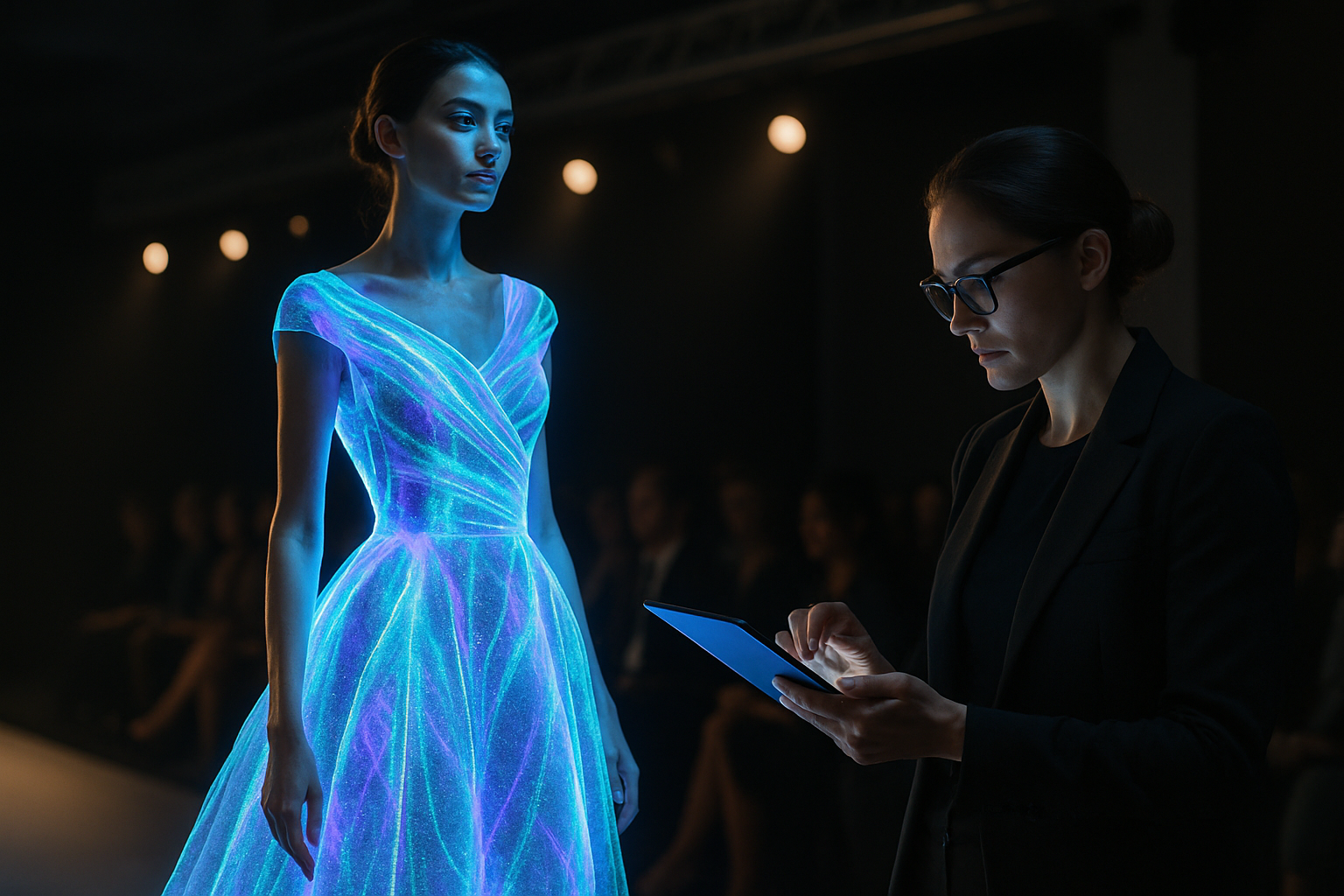Holographic Haute Couture: Fashion's Digital Frontier
In a world where technology and art intersect at every turn, the fashion industry is witnessing a revolutionary transformation. Holographic haute couture, a cutting-edge fusion of traditional craftsmanship and digital innovation, is redefining the boundaries of fashion design and presentation. This article delves into the mesmerising world of holographic fashion, exploring its origins, current applications, and potential to reshape the future of style.

Beyond the Runway: Practical Applications
While initially confined to high-concept runway presentations, holographic fashion has begun to find practical applications in everyday wear. Innovative startups are developing holographic accessories, such as handbags with customisable digital displays and shoes that can change colour and pattern with the tap of a smartphone. These products offer consumers unprecedented personalisation options, allowing them to adapt their style to any occasion at a moment’s notice.
Sustainability in the Digital Age
One of the most promising aspects of holographic fashion is its potential to address sustainability concerns in the industry. By replacing physical garments with digital projections, designers can significantly reduce material waste and carbon emissions associated with production and shipping. Some forward-thinking brands are already experimenting with virtual fashion shows and digital-only collections, allowing customers to purchase and wear holographic garments in augmented reality environments.
The Challenges of Pixelated Couture
Despite its potential, holographic fashion faces several hurdles on its path to widespread adoption. Technical limitations, such as the need for specialised viewing devices and controlled lighting conditions, currently restrict the use of holographic garments in everyday settings. Additionally, concerns about privacy and data security arise as these digital garments become increasingly connected and personalised.
A Glimpse into the Future of Fashion
As technology continues to advance, the possibilities for holographic fashion seem limitless. Industry experts predict the emergence of fully customisable, shape-shifting garments that can adapt to changing weather conditions or the wearer’s mood. The line between physical and digital fashion is likely to blur further, with augmented reality allowing individuals to view and interact with holographic clothing in real-time.
The Cultural Impact of Virtual Vestments
The rise of holographic fashion is not just a technological phenomenon but a cultural shift that challenges our perceptions of identity, creativity, and self-expression. As digital garments become more prevalent, questions arise about the nature of ownership in the virtual realm and the role of fashion in shaping our online personas. This new frontier of fashion design opens up exciting possibilities for cross-cultural collaboration and the democratisation of high-end style.
In conclusion, holographic haute couture represents a bold step into the future of fashion, blending artistry with cutting-edge technology to create garments that are truly out of this world. As designers, technologists, and consumers alike embrace this digital revolution, we stand on the brink of a new era in style—one where the only limit is our imagination. The fashion industry, long known for its innovation and adaptability, is once again proving its ability to evolve with the times, weaving the fabric of the future with threads of light and code.




